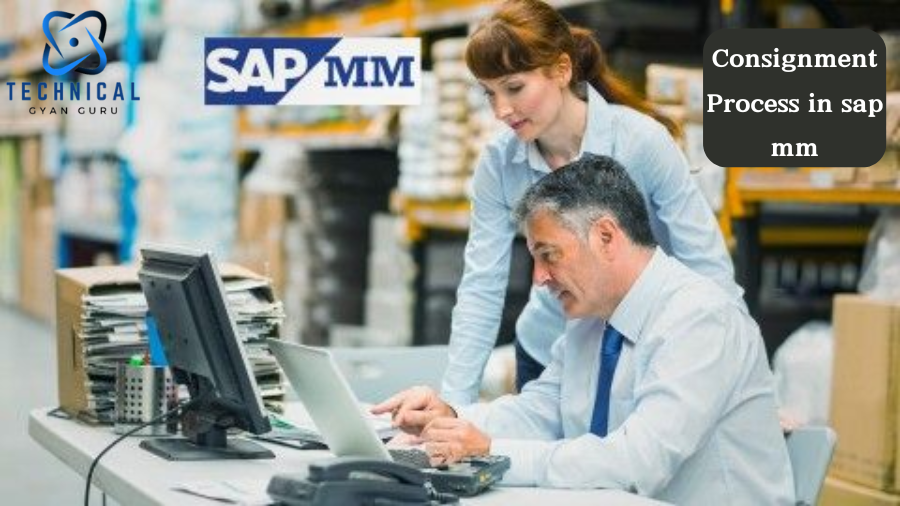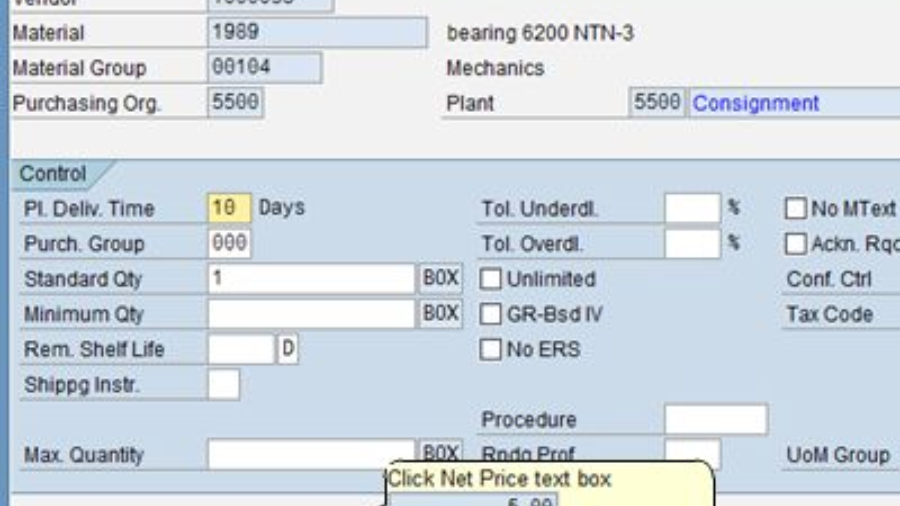
Vendor Consignment Process in SAP MM, Unleash the power of vendor consignment in SAP MM! Optimize inventory management, reduce costs, and streamline processes. Learn everything you need to know: creating POs, goods receipts.
1. Introduction
Vendor consignment is a game-changer in inventory management, allowing businesses to store and manage vendor-owned inventory on their premises. This approach offers numerous benefits, including reduced carrying costs and improved space utilization. In SAP MM, key functionalities like special stock types and consignment purchase orders simplify the vendor consignment process, making it more efficient and effective.
2. Setting Up Vendor Consignment

Master Data Preparation: Maintaining accurate vendor master data is crucial for successful vendor consignment. This includes setting up consignment info records and specifying payment terms. Additionally, you need to create a special stock type (e.g., “KN”) for consignment inventory in the Material Master (MM01/MM02). Key terms to include are “material master record,” “purchasing information record,” and “special stock indicator.”
Configuration: Configure SAP to automatically create consignment stock upon goods receipt. This involves customizing movement types (e.g., 101 K) specifically for consignment transactions, ensuring smooth processing and accurate stock updates.
3. The Vendor Consignment Process in SAP MM
Creating a Consignment Purchase Order (PO): Using the “K” item category in ME21N for consignment POs ensures that price information is excluded since the vendor retains ownership. This step is essential for accurate stock and liability management.
Goods Receipt (GR) for Consignment Stock: Record the receipt of consignment materials using MIGO with movement type 101 K. This process updates consignment stock levels without impacting the company’s inventory valuation, ensuring accurate tracking and reporting.
Consuming Consignment Stock: When consuming consignment materials, use the regular material issue process (e.g., 201). This automatically updates the vendor’s liability based on the consumption, streamlining the accounting and stock management processes.
Transferring Consignment Stock to Own Stock (Optional): In scenarios where the company decides to own the previously consigned materials, use movement type 411 K in MIGO to transfer consignment stock to the company’s inventory, ensuring proper valuation and ownership tracking.
4. Vendor Consignment Settlement
Settle the vendor’s liability for consumed consignment materials using transaction MRKO. Different settlement types, such as periodic and automatic, can be configured based on the agreed terms with the vendor. This process also involves creating a vendor invoice based on the settlement, ensuring accurate financial records.
5. Maintaining and Monitoring Consignment Stock
Regularly monitor stock levels to ensure adequate availability and avoid stockouts. Use reports like MB51 to track consignment stock movements and consumption trends, providing insights for better inventory management.
6. Benefits and Considerations
Benefits:
- Improved cash flow
- Reduced risk of stockouts
- Optimized inventory management
Considerations:
- Accurate consumption tracking
- Effective vendor communication
People Also Ask (PAA) Section:
- What are the different types of vendor consignment in SAP MM?
- How can I automate the vendor consignment settlement process?
- What are the tax implications of vendor consignment?
7. Conclusion

Vendor consignment in SAP MM offers significant advantages for efficient inventory management, from reducing carrying costs to improving cash flow. SAP consultants can play a crucial role in optimizing this process, ensuring seamless integration and operation. Explore SAP resources or contact a consultant to implement and leverage vendor consignment for your business.
Call to Action: Ready to optimize your inventory management with vendor consignment in SAP MM? Dive into SAP resources or reach out to a consultant today for tailored implementation support.
Additional Considerations:
- Include relevant screenshots of SAP transactions (ME21N, MIGO) for better visualization.
- Use internal linking to relevant sections within the article for user-friendly navigation.
- Consider including a table summarizing the key steps involved in the vendor consignment process.
you may be interested in this blog here:-
Spark Joyful Learning Engaging English Worksheet for UKG Class








